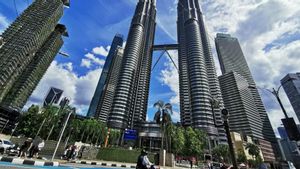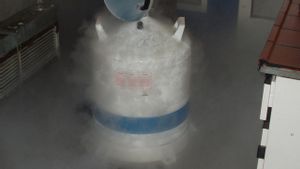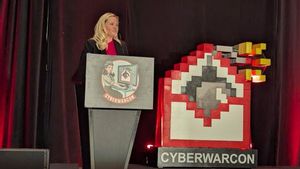JAKARTA - Although not the first mosque to be built in the United States, this mosque has made many history of Islamic development in Uncle Sam's country, recognized as a historic building.
In a small wooden building on a deserted road in Cedar Rapids, Iowa, Albert Aossey looked at a black-and-white photo showing a group of Muslim youths worshiping.
"The top barisan, the second, it's me," he said, pointing to a young man wearing a white shirt.
The photo was taken in the 1950s, not far from where Aossey (84) stands today. The photo is one of dozens of photos displayed in the basement of Mother Mosque of America, which records the ups and downs of the oldest mosque in the United States.
Aossey has been closely linked to the simple square building near the corner of 9th Street and M Avenue since birth. His father, Yahya, migrated to the US from Nabatieh, the region that is now southern Lebanon in 1907, and eventually settled in the Cedar Rapids in the 1920s.
Yahya, who goes by William's name in the US, teamed up with several other Muslims from Levant to build the first mosque in Cedar Rapids.
The white-walled building that resembles an old school house is not the first mosque built in Uncle Sam's country. Previously, a mosque in Ross, North Dakota, was built in 1929, but was destroyed in the past century.
Included in the list of National Historical Places in the United States, the construction of Mother Mosque began in 1929 and was completed in 1934.
"I would say that the building itself is a very simple building," explained Imam Taha Tawil, who has led the mosque for more than three decades.
In areas that are still working class environments, the original Muslim community here consists of traders and farm laborers.
They don't have the skills to build a decorated structure, so they choose the functional one.
"There aren't many Islamic features, because we don't have artists in this community," Tawil told The National,
The mosque has two floors. The main floor, on a square room, is for worship. A small area on the back is used for wudu before prayer.
A narrow ladder leads to the basement, where there are small kitchens, bathrooms and main seating areas for the community to gather.
Now, the condition of this mosque is still very similar to the building built by Aossey's father almost 90 years ago. He had warm memories when he came to the mosque when he was a child.
"Every Thursday night, there will be coffee and there will be sandwich or roll bread or donuts," Aossey recalled.
"Someone will read the Qur'an for half an hour on the main floor, then they shift the chairs back, take out the tables and play ping pong until 10 or 11 at night," he explained.
This building became a gathering place for the Muslim community which continued to grow until the 1970s, when the number of worshipers began to exceed the capacity of small rooms.
They ended up building a larger mosque in other parts of Cedar Rapids and selling the original building.
In the 1970s and 1980s, this building became a refugee center for Cambodians fleeing the Red Khmer, and later became a fire church, before it finally broke down.
That's when Imam Tawil mobilized the community to buy back the building and return it to a well-functional mosque.
Imam Tawil, who is from Jerusalem, said he was inspired to rebuild the mosque because of his childhood in the ancient city.
"I think about history and the next generation. I think we need to preserve this building and defend it as a beacon," said Tawil.
Although the city of Cedar Rapids has long supported the Muslim community, which now stands at thousands, the mosque has experienced an Islamophobic attack after the September 11, 2001 attacks and when Donald Trump served as president.
"Trump has caused a lot of pain and suffering for us as Muslims in America, with its right-handed policies," said Tawil.
The priest believes that the mosque, which has been standing for almost a century, is a testament to the deep ties between Muslims and the United States.
"This building is an American entity and institution. We have to keep it so people can't say, 'Go back to your body,'" he said.
"This is our country and this is the proof. This building is proof that we are here and our ancestors have contributed to the community," he said.
As for Aossey, this building is a real relationship with his beloved late father.
"He taught me the importance of life and family," he said, in the worship space that had kept him rooted in Cedar Rapids for eight decades.
The English, Chinese, Japanese, Arabic, and French versions are automatically generated by the AI. So there may still be inaccuracies in translating, please always see Indonesian as our main language. (system supported by DigitalSiber.id)











